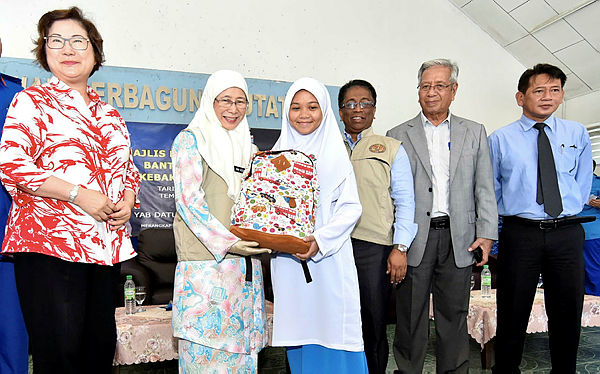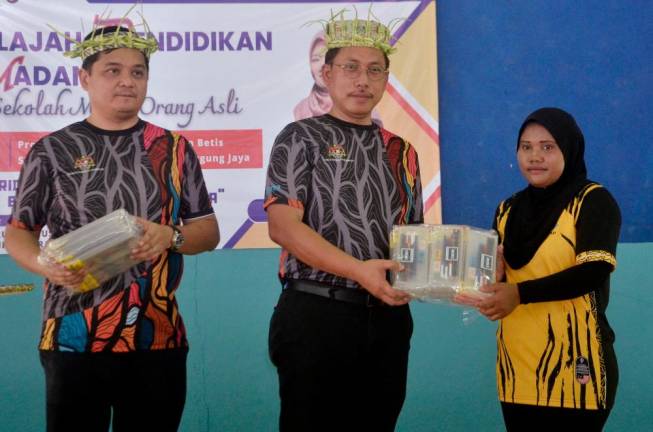KOTA KINABALU: The government implements disaster risk reduction measures across the country holistically by taking into account human, socio-economic and environmental concerns, Datuk Seri Dr Wan Azizah Wan Ismail said today.
The Deputy Prime Minister said this was important because disaster management in Malaysia, especially in Sabah, had to contend with a multi-hazard scenario of having to deal with floods, landslides and earthquakes.
“For example, following the earthquake in Ranau, Sabah, in June 2015, we faced two situations in Kota Belud, namely the lack of water resources during the drought and excess water that led to floods during the wet season,” she said at the presentation of National Disaster Relief Aid for fire victims in Putatan, near here.
Dr Wan Azizah said that as such, the federal government, through the Department of Irrigation and Drainage and with the collaboration of the other departments such as the Minerals and Geoscience Department, Meteorological Department and Agriculture Department, was in the process of conducting an integrated feasibility study in the Kota Belud district.
Also present at the event were Sabah Deputy Chief Minister Datuk Christina Liew; Sabah Assistant Minister of Law and Native Affairs Datuk Uda Sulai, who is the assemblyman for Petagas; and Putatan MP Awang Husaini Sahari.
Dr Wan Azizah said the study involved an assessment of the sufficiency of water resources and preparation of water resources management plans for agricultural, domestic and industrial purposes; disaster and flood risk evaluations through the preparation of hazard and risk maps as well as the preparation of mitigation plans to minimise the impact of disasters.
“We hope the study will provide the federal and state governments with valuable information in sustainable development planning by taking into account aspects like disaster risks and environmental impact,” she said.
She said that apart from the implementation of prevention and mitigation programmes, the federal government would also, through the National Disaster Management Agency (Nadma), focus on the readiness to face disasters and the empowerment of agencies to react during disasters.
“I was told that among the readiness initiatives being implemented to face the north-east monsoon season for 2018 and 2019 is the giving out of aid worth RM235,000 to the Sabah state and district disaster management committee secretariats,” she said.
As for the short-term mitigation plan, she said, the Sabah government and DID planned to implement a special project to deepen Sungai Kedamaian in Kota Belud as it had become shallow due to the post-quake sedimentation.
“The federal government has also allocated RM50 million under the 11th Malaysia Plan to implement the Sungai Kedamaian Flood Mitigation Plan (FMP) and RM17 million for the Sungai Gurong-Gurong FMP, which is being carried out as long-term measures to overcome floods,” she said.
Dr Wan Azizah said preventive measures from the creation of new disaster risks should also be applied by all parties in the comprehensive risk management cycle.
This, she said, could be done by implementing mitigation programmes to reduce existing disaster risks via improving preparedness planning as well as disaster response, apart from better rejuvenation plans.
“In this context, Nadma, being the country’s main disaster management agency, together with the state governments and related agencies as well as with the support of various parties like universities and private entities, was always working to raise its risk management strategies.
“Among the programmes jointly carried out by Nadma, the Meteorological Department, Sabah government, Tawau District Office as well as state and district-level responder agencies, is the testing of the tsunami warning siren in Tawau last year to raise community awareness. Therefore, things like this must be applied to other disaster risks in Sabah, such as floods and landslides,” she said. — Bernama














